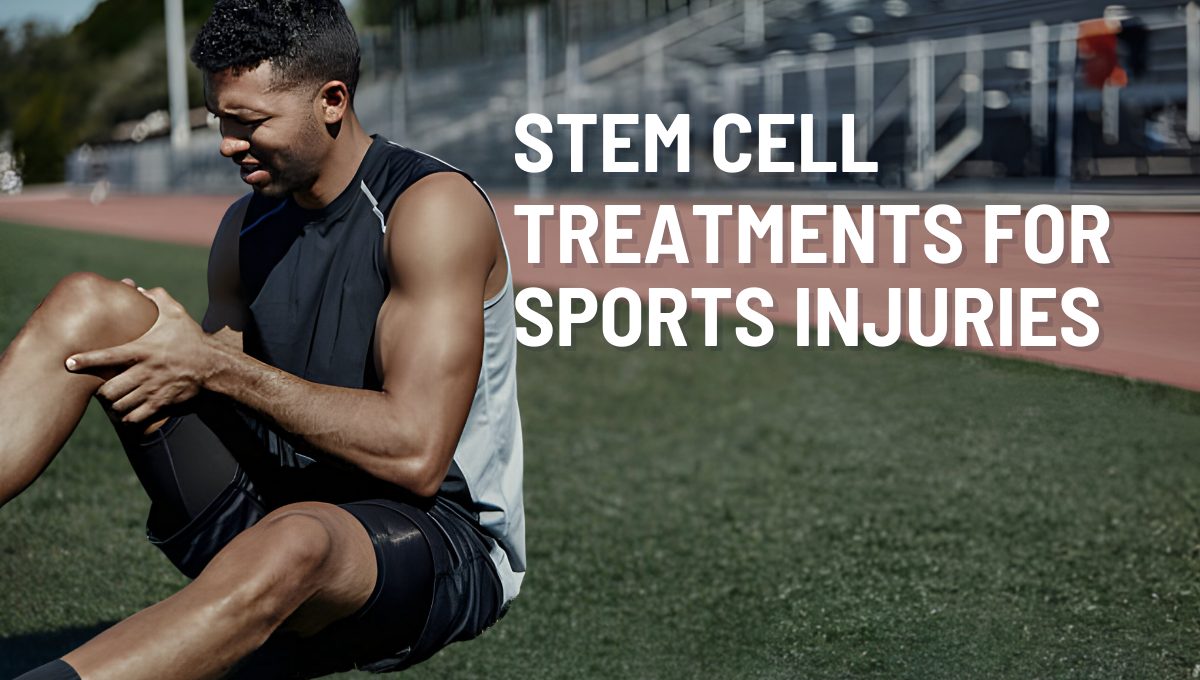Stem Cell Treatments for Sports Injuries: A Revolutionary Approach to Athletic Recovery
Stem cell therapy is revolutionizing sports medicine, offering promising solutions for athletes with various injuries. Stem cell therapy involves using the body’s natural healing cells to repair damaged tissues, thus enhancing recovery and optimizing performance. This innovative approach is gaining traction due to its potential to expedite healing processes, reduce pain, and improve athletes’ overall quality of life. The Life Altering Stem Cell Therapy Institute, American-owned and operated, is at the forefront of these advancements, utilizing mesenchymal stem cells (MSCs) derived from Wharton’s Jelly in the umbilical cord.
Stem Cell Therapy for Athletes
Athletes often endure rigorous physical activities that can lead to various injuries. While effective to some extent, traditional treatments usually fall short regarding recovery time and long-term effectiveness. Stem cell therapy for athletes presents a game-changing solution by addressing these issues directly at the cellular level. MSCs have the unique ability to differentiate into various cell types, aiding in the repair of muscles, tendons, ligaments, and cartilage.
Injury Recovery
Injuries are an inevitable part of an athlete’s career. The ability to recover quickly and effectively can significantly impact an athlete’s performance and career longevity. Stem cell treatment accelerates injury recovery by promoting tissue regeneration and reducing inflammation. This shortens the recovery period and enhances the quality of the repaired tissues, reducing the likelihood of re-injury.
Benefits of Stem Cell Therapy
The benefits of stem cell therapy in sports medicine are manifold:
- Faster Recovery: MSCs expedite the healing process, allowing athletes to return to sports sooner.
- Reduced Pain: Stem cell therapy alleviates pain more effectively than traditional methods.
- Minimized Scarring: By promoting natural healing, stem cells reduce scarring, leading to better functional recovery.
- Long-term Effectiveness: Treatments provide sustained relief and improved functionality, unlike temporary solutions like corticosteroid injections.
Common Applications in Sports Medicine
Stem cell therapy is being used to treat a variety of sports-related injuries, including:
- Joint Injuries: Knees, shoulders, and hips are commonly affected.
- Tendon and Ligament Injuries: Particularly in the Achilles tendon, rotator cuff, and ACL.
- Cartilage Damage: Essential for joint health and mobility.
- Elbow Injuries: These are seen in tennis and golf.
Joint Injuries
Joint injuries are prevalent in sports and can be debilitating. Stem cell therapy for shoulder, knee, and hip pain offers a noninvasive alternative to surgery. Stem cells for knee pain can regenerate cartilage and repair damaged tissues, providing relief and restoring function.
Tendon and Ligament Injuries
Tendons and ligaments are crucial for stability and movement. Injuries in these tissues are common among athletes and can be challenging to heal. Stem cell therapy promotes the regeneration of these tissues, ensuring a stronger and more resilient recovery.
Clinical Exploration and Cartilage Damage
Often seen in athletes, cartilage damage leads to joint pain and mobility issues. Clinical studies have demonstrated the efficacy of MSCs in regenerating cartilage, offering a promising solution for long-term joint health.
Elbow Stem Cell Treatment
Elbow injuries, such as tennis elbow or golfer’s elbow, are common among athletes. Elbow stem cell treatment involves injecting MSCs into the affected area, promoting healing and reducing inflammation. Key studies have shown significant improvements in pain and function, highlighting the potential of stem cell therapy in treating elbow injuries.
Key Studies on Elbow Stem Cell Treatment
Several studies underscore the effectiveness of stem cell therapy for elbow injuries. These studies report high success rates in pain reduction and functional improvement, making it a viable option for athletes looking to avoid surgery and prolonged downtime.
Considerations and Future Research
While stem cell therapy holds immense promise, ongoing research is essential to understand its potential and optimize its full application. Future research aims to refine techniques, improve outcomes, and expand the range of treatable conditions.
Stem Cell Therapy for Hamstring Injuries
Hamstring injuries are notorious for their long recovery times and high recurrence rates. Stem cell therapy offers a new approach by enhancing the natural healing process, reducing recovery time, and strengthening the injured tissues.
Potential of Stem Cells in Treating Hamstring Injuries
The potential of stem cells in treating hamstring injuries lies in their ability to regenerate damaged muscle fibres, reduce inflammation, and accelerate the healing process. This can lead to a quicker and more robust recovery.
Research and Future Directions
Research into stem cell therapy for hamstring injuries is ongoing, with promising results. Future directions include optimizing delivery methods, improving cell viability, and expanding the understanding of how MSCs can best be utilized in muscle repair.
Optimizing Athletic Performance with Stem Cell Therapy
Beyond injury recovery, stem cell therapy is being explored for its potential to enhance athletic performance. Stem cell treatments can help athletes maintain peak performance levels by strengthening tissues and preventing injuries.
Strengthening Tissues and Preventing Future Injuries
Preventative applications of stem cell therapy include strengthening tendons, ligaments, and muscles, reducing the risk of future injuries. This proactive approach can extend an athlete’s career and improve overall performance.
The Ethical and Safe Use of Stem Cells in Sports
The ethical use of stem cells in sports is paramount. Ensuring treatments are safe, effective, and ethically sourced is crucial for maintaining the integrity of sports medicine. The Life Altering Stem Cell Therapy Institute adheres to stringent ethical standards and utilizes ethically sourced MSCs from umbilical cord tissue.
Umbilical Cord Tissue-Derived Cells
MSCs derived from umbilical cord tissue offer several advantages over other sources, such as bone marrow or adipose tissue. They are more potent, have a higher proliferation rate, and are less likely to cause immune reactions.
Read Also: Know More About Stem Cell Therapy in Miami
Advantages over Other Sources
- Higher Potency: Umbilical cord-derived MSCs are more able to differentiate into various cell types.
- Less Invasive: Harvesting MSCs from the umbilical cord is less invasive than bone marrow or adipose tissue extraction.
- Reduced Immune Response: The recipient’s immune system is less likely to reject these cells.
Comparison with Other Stem Cell Treatments
Compared to other stem cell treatments, umbilical cord-derived MSCs provide a more effective and efficient solution for sports injuries. Their superior regenerative capabilities and safety profile make them the preferred choice for many athletes.
Stem Cell Therapy Procedures
Understanding the procedures involved in stem cell therapy is crucial for athletes considering this treatment.
- Bone Marrow Aspiration: This involves extracting MSCs from the bone marrow, which is invasive and painful.
- Adipose Tissue Extraction: MSCs are harvested from fat tissue, which is less invasive but may not be as potent.
- Stem Cell Injections: MSCs are injected directly into the injured area to promote healing and regeneration.
Success Stories: Athletes Who Have Received Stem Cells
Many athletes have successfully utilized stem cell therapy to recover from injuries and enhance their performance. Notable examples include professional football players, basketball players, and Olympians who have experienced significant improvements in their conditions.
Avoiding Knee Surgery with Stem Cell Therapy
Stem cell therapy for knees offers many athletes a viable alternative to surgery. By regenerating damaged cartilage and tissues, stem cell treatments can alleviate pain and restore function, helping athletes avoid invasive procedures and lengthy recovery times.
Read Also: Stem Cell Therapy Implant Shows Promise For Type 1 Diabetes
Follow-up and Outcomes
Follow-up care is crucial for ensuring the success of stem cell therapy. Regular monitoring and rehabilitation exercises can enhance the treatment’s outcomes, ensuring athletes achieve optimal recovery and performance.
Conclusion
Stem cell treatments for sports injuries represent a groundbreaking advancement in sports medicine. The Life Altering Stem Cell Therapy Institute is leading the way, providing athletes with innovative, effective, and ethical treatment options. By harnessing the power of mesenchymal stem cells (MSCs) derived from Wharton’s Jelly in the umbilical cord, athletes can experience faster recovery, reduced pain, and improved performance. As research and technology continue to evolve, the future of stem cell therapy in sports medicine looks incredibly promising, offering hope and healing to athletes worldwide.

